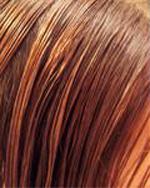|
Beauty draws us with a single hair. Alexander Pope |
Abilities for hair restoration
The healthy condition of the hair depends, to a very large extent, on the intake of sufficient amounts of essential nutrients in the daily diet. Hair is made of keratin, a protein, which also makes up the nails and the outer layer of our skin. One of the primary cause of hair loss is a high amount of the male hormone, dihydrotestosterone (DHT) within the hair follicle. DHT is produced from testosterone in the prostate, various adrenal glands, and the scalp. After a period of time, an over abundance of DHT causes the hair follicle to degrade and shortens the active phase of the hair. Another important cause of falling hair is stress, such as worry, anxiety and sudden shock. Stress leads to a severe tension in the skin of the scalp. This adversely affects the supply of essential nutrition required for the healthy growth of hair. There are many surgical procedures which will help to restore the hair from falling. Surgical restoration is the only permanent solution to baldness. It involves a series of operations that extract plugs of scalp from the sides and back of your head, where hair grows densely, and implant them on top and in front, where you are going bald. Scalp reduction is performed on patients with well-defined bald spots in the crown area of the scalp. It is sometimes done in conjunction with hair transplantaion to reduce the size of the bald scalp, especially in patients who do not have enough donor hair to cover the bald areas. For men, hair loss is male pattern baldness. Yes, there are other types of hair loss, including rare conditions such as alopecia totalis and alopecia universalis, where the entire scalp and entire body, respectively, become completely bald due to a viral condition that is irreversible. There is also patch baldness, in which hair falls out in patches of the scalp. This is caused by stress or poor nutrition or adverse scalp conditions. But the hair will usually grow back once the cause has been rectified. The most familiar hair loss pattern is where the hair begins to recede in the hairline and the crown at roughly the same time. The hair in the mid-scalp or anterior scalp is often the last to go. But go it will, eventually leaving a man with the horseshoe of hair that is the telltale sign of typical male pattern baldness. The chief difference in womens androgenic hair loss from mens (both are hormone related) is that women tend to experience thinning that occurs in no particular pattern or part of the scalp. Unlike men, the scalp may not actually be totally denuded of hair, just thin to the point where the scalp is visible. Like men, however, the resulting hair loss is generally irreversible. Minoxidil (Rogaine). This over-the-counter medication is approved for the treatment of androgenetic alopecia and alopecia areata. Minoxidil is a liquid that you rub into your scalp twice daily to regrow hair and to prevent further loss. Some people experience some hair regrowth or a slower rate of hair loss or both. Minoxidil is available in a 2 percent solution and in a 5 percent solution. New hair resulting from minoxidil use may be thinner and shorter than previous hair. But there can be enough regrowth for some people to hide their bald spots and have it blend with existing hair. New hair stops growing soon after you discontinue the use of minoxidil. If you experience minimal results within six months, your doctor may recommend discontinuing use. Side effects can include irritation of the scalp. Anthralin (Drithocreme). Available as either a cream or an ointment, anthralin is a synthetic, tarry substance that you apply to your scalp and wash off daily. It's typically used to treat psoriasis, but doctors can prescribe it to treat other skin conditions. Anthralin may stimulate new hair growth for cases of alopecia areata. Hair loss and thinning hair can be brought on by a variety of different conditions. Although, many researchers still pin most of the blame on genetics. The most common type of hair loss is referred to as "pattern hair loss" (androgenic alopecia). Many natural hair loss treatments exist that can help deal with pattern hair loss. Listed below are other conditions which can cause hair loss and thinning hair. Androgenic alopecia develops when the hair follicle (the place under the skin where hair grows from) experiences a reduction in size, as well as a time reduction in the active growth phase. this translates into a simple fact: more and more of the hair follicles will spend time in the resting state where hair is shed once the state is completed. Fortunately, androgenic alopecia does not develop in all hair follicles at the same time. This is why some part of the scalp seems to be losing more hair than the other. High Fever, Severe Infection, Severe Flu - Illnesses may cause hairs to enter the resting phase. Four weeks to three months after a high fever, severe illness or infection, a person may be shocked to see a lot of hair falling out. This shedding usually corrects itself. Inadequate Protein in Diet - Some people who go on crash diets that are low in protein, or have severely abnormal eating habits, may develop protein malnutrition. The body will save protein by shifting growing hairs into the resting phase. Massive hair shedding can occur two to three months later. Hair can then be pulled out by the roots fairly easily. This condition can be reversed and prevented by eating the proper amount of protein and, when dieting, maintaining adequate protein intake. Cancer Treatments - Some cancer treatments will cause hair cells to stop dividing. Hairs become thin and break off as they exit the scalp. This occurs one to three weeks after the treatment. Patients can lose up to 90 percent of their scalp hair. The hair will regrow after treatment ends. Patients may want to get wigs before treatment. Low Serum Iron - Iron deficiency occasionally produces hair loss. Some people don't have enough iron in their diets or may not fully absorb iron. Women who have heavy menstrual periods may develop iron deficiency. Low iron can be detected by laboratory tests and can be corrected by taking iron pills. Major Surgery/Chronic Illness - Anyone who has a major operation may notice increased hair shedding within one to three months afterwards. The condition reverses itself within a few months but people who have a severe chronic illness may shed hair indefinitely. Fungus Infection (Ringworm) of the Scalp - Caused by a fungus infection, ringworm (which has nothing to do with worms) begins with small patches of scaling that can spread and result in broken hair, redness, swelling, and even oozing. This contagious disease is most common in children and oral medication will cure it. Many people (wrongly) will drop a handful of shampoo on their head and then rinse it off. Shampoo must be worked through all of your hair, as well as the scalp and hairline. Frequently shampooing can dry out your hair and, therefore, must be followed by the use of a moisturizing conditioner. It is very important to work the conditioner through all of your hair and leave it in for three to five minutes. Again, many people misapply and misuse conditioner by not working it through to the ends of the hair and not leaving it on long enough. Blond hair may turn yellow, fade or become dull due to UV exposure. Even natural brunette hair tends to develop reddish hues from sun exposure due to oxidation of melanin pigments.
Terms interpretationScalp A love stories starts!
|

